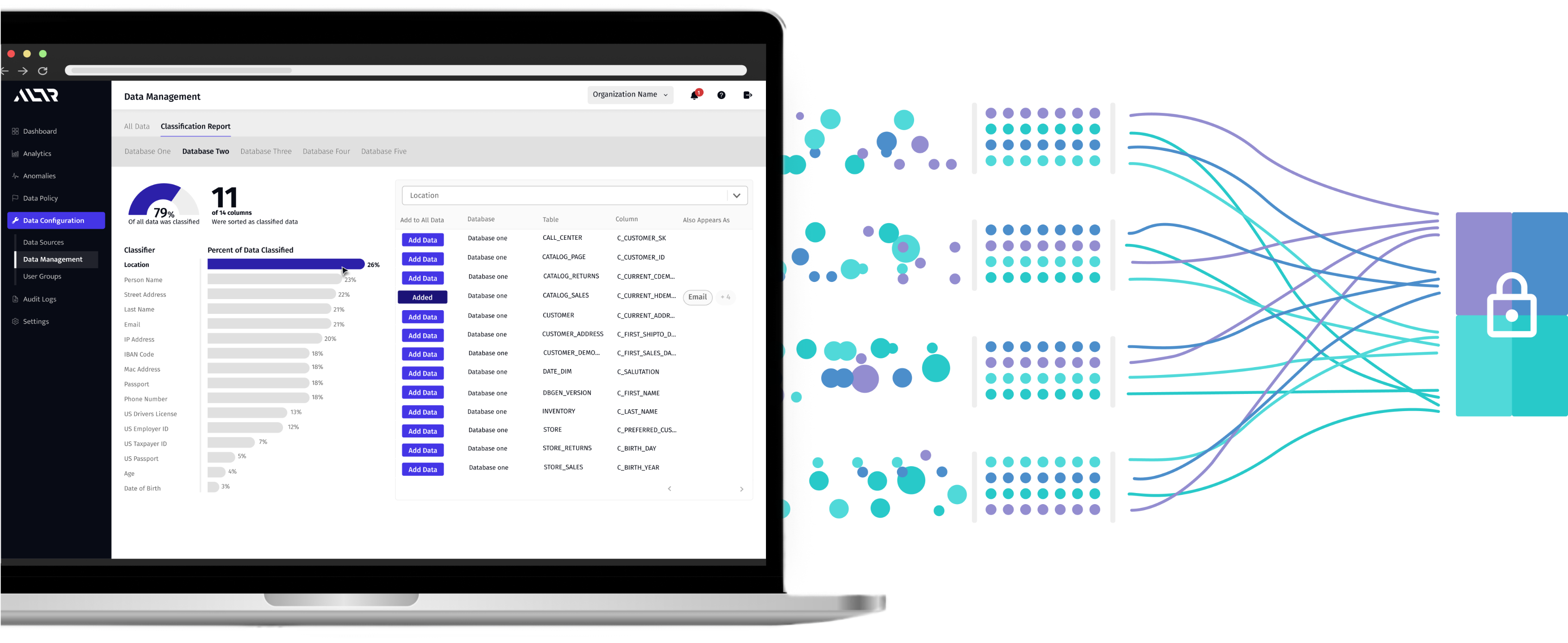
My Role and Focus
Client: ALTR Solution Inc.
Team & Timeline
Project Supervisor: Jacob Wagh
Lead Engineer: Kevin Rose
Dec 2020 - June 2021
Tools
Confluence
Jira
The Problem
Companies today are able to leverage flexible and powerful cloud data storage tools such as AWS, and Snowflake to harness the power of data in ways never thought possible. However, with this increase in power and ubiquity of data access comes increase risk of bad actors gaining access to highly sensitive, personal data.
The Solution
In order for companies to reap the benefits modern cloud data solutions without compromising their data security, they need to ability to quickly identify all sensitive data within their cloud databases, and go on to secure that data.
Results
- Used as a primary selling point of the product experience
- Aided to the acquisition of the companies largest enterprise client in a deal worth over 500k ARR

Research
I began my process with gleaning and understanding as much supporting and contextual information as was neccessary for this project. I met with internal stakeholders, talked to users, and researched what was already out there on the market.
Interviews
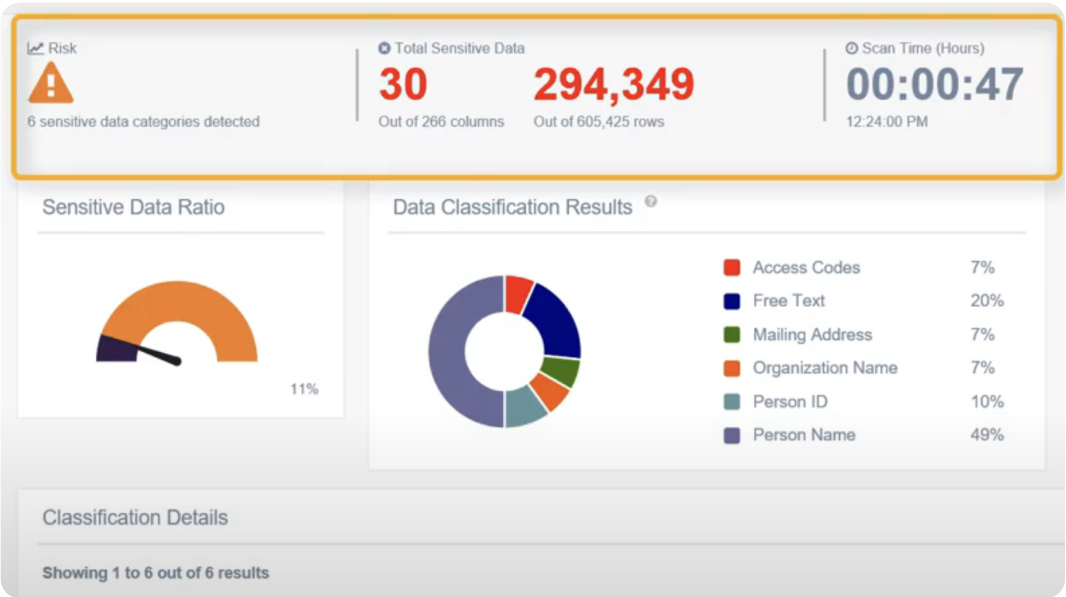
High-level classifications metrics
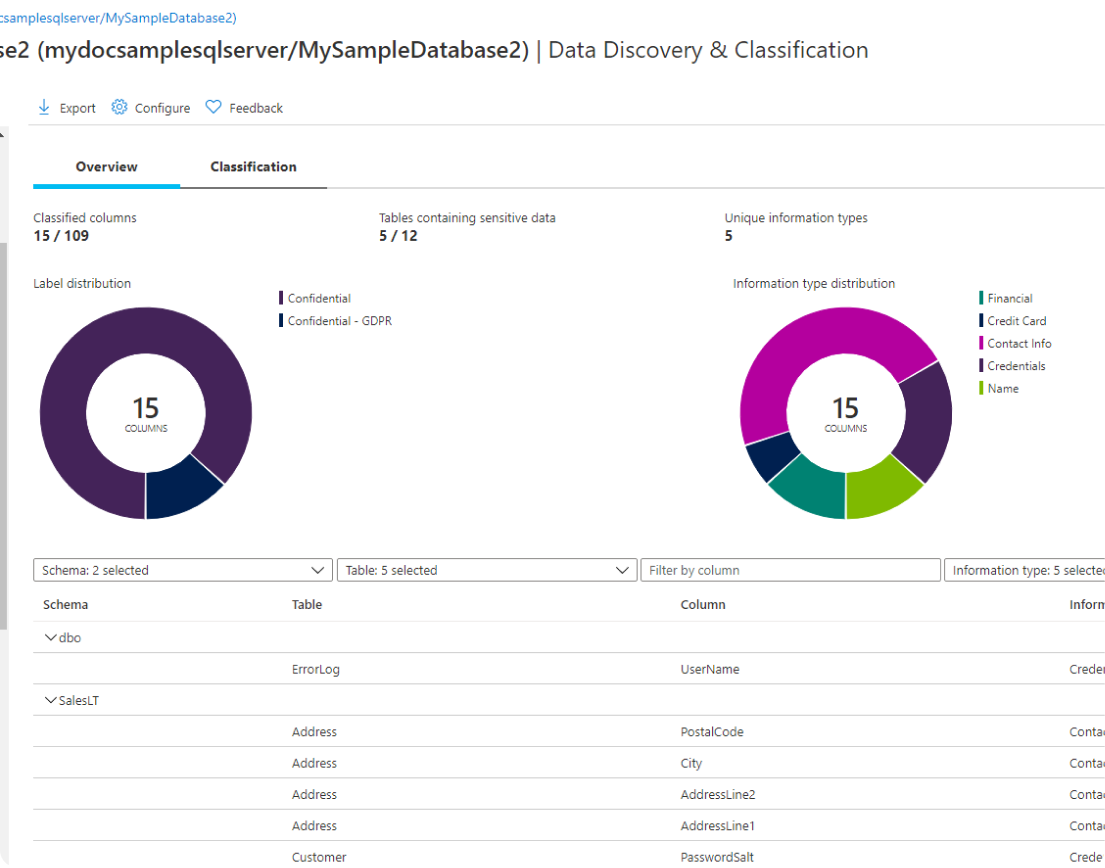
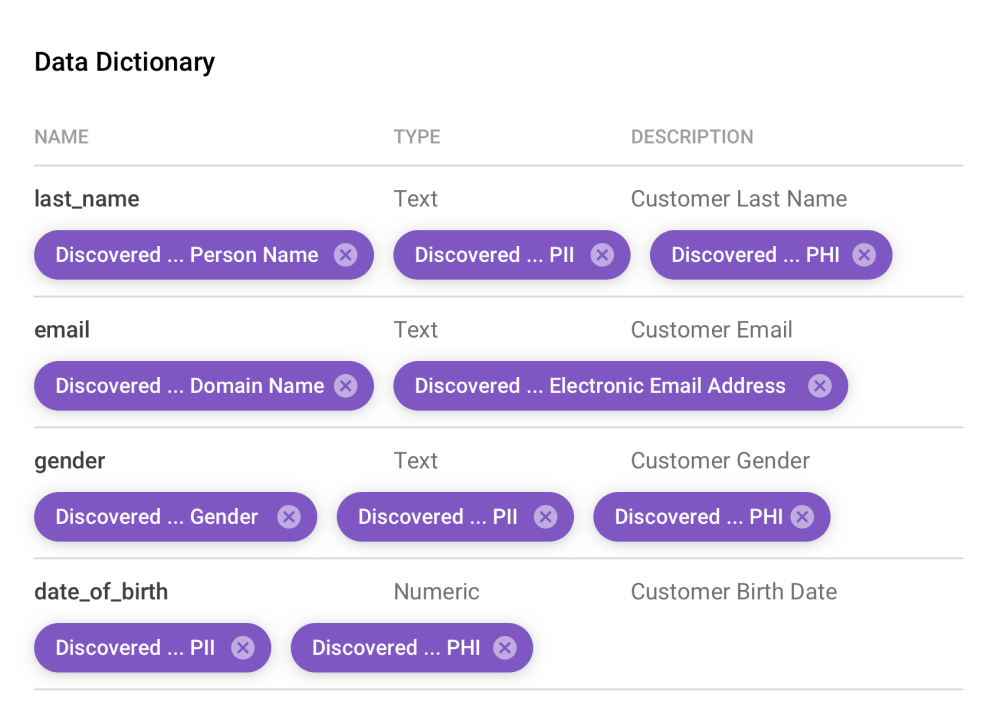
Ideation
I analyzed the current user journey and product experience, and used Fig Jam to map out the new additions to the journey. This allowed me to better understand what connective tissue would be necessary to allow the feature to function within the product.
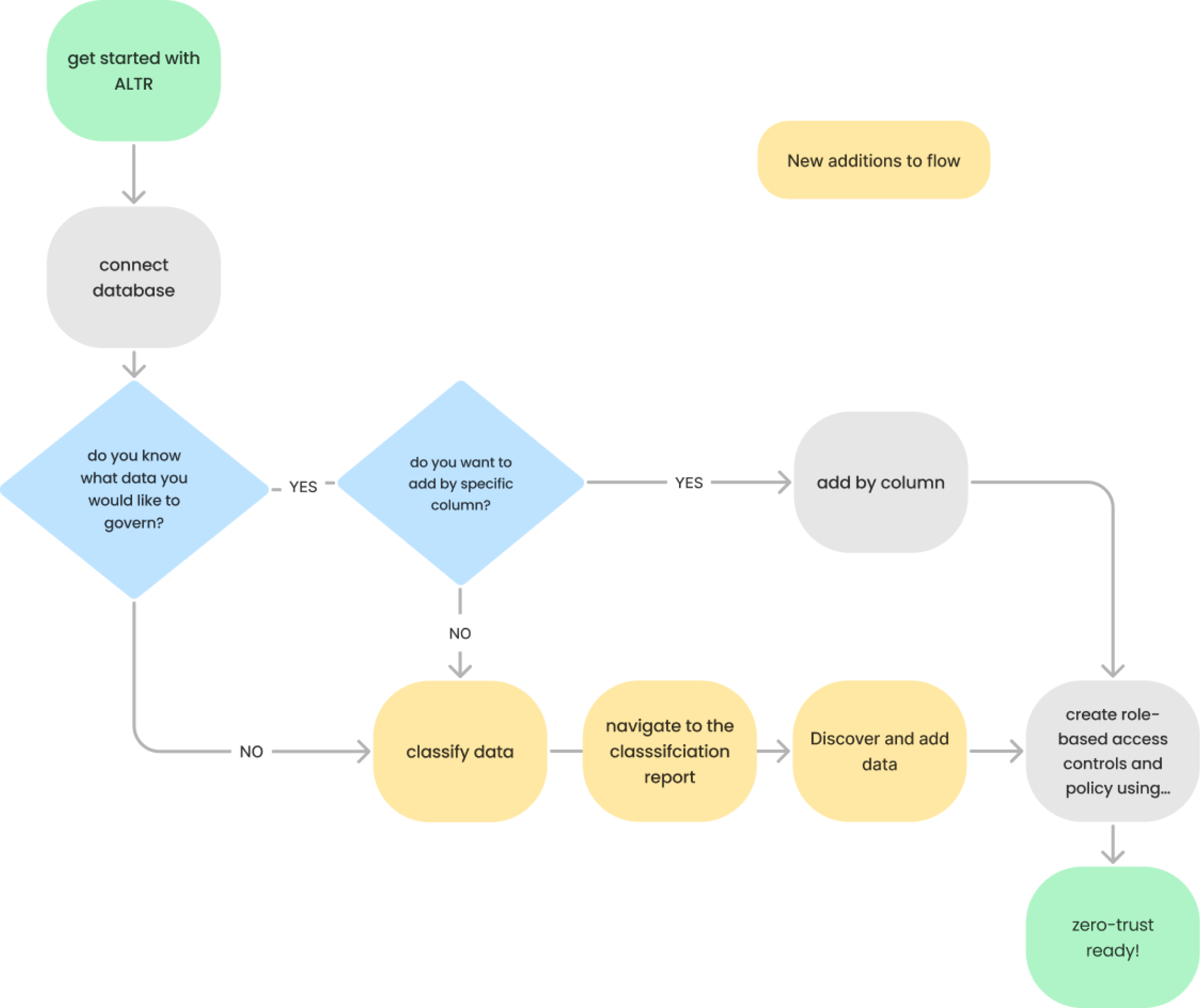
I went on to mock out several different visualizations, and configurations to later be refined through feasibility discussions and usability testing. Below are a few impactful samples.
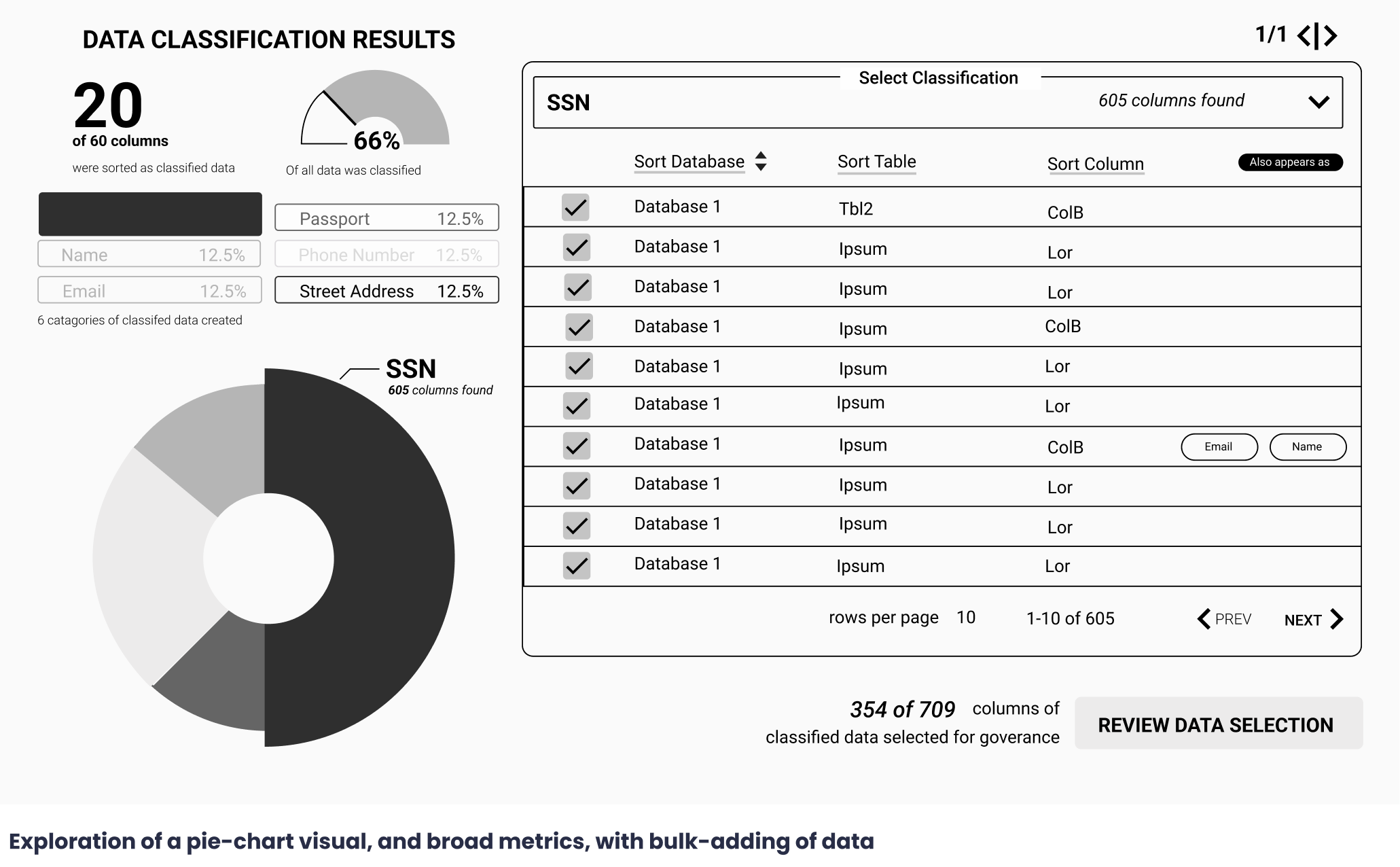
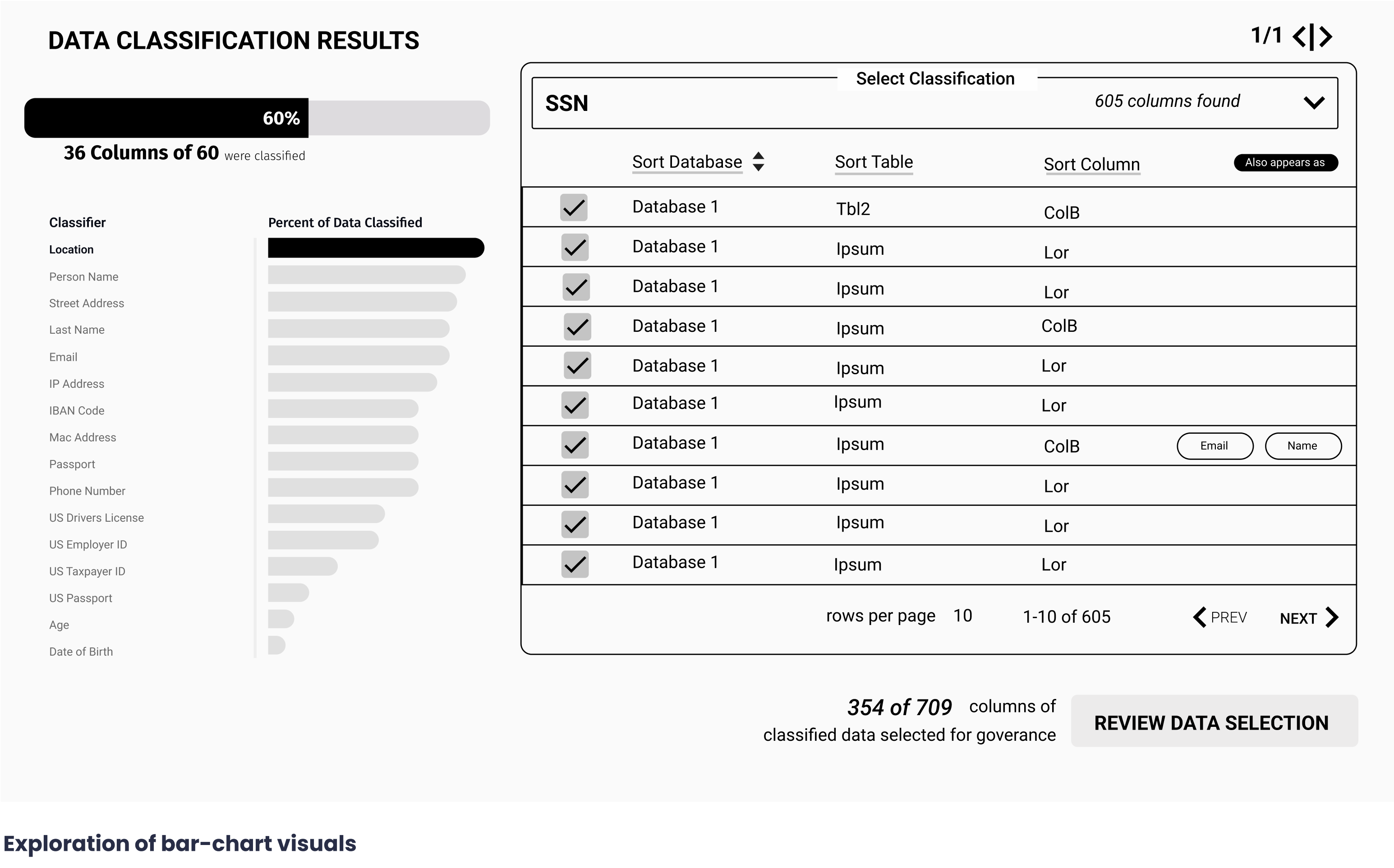
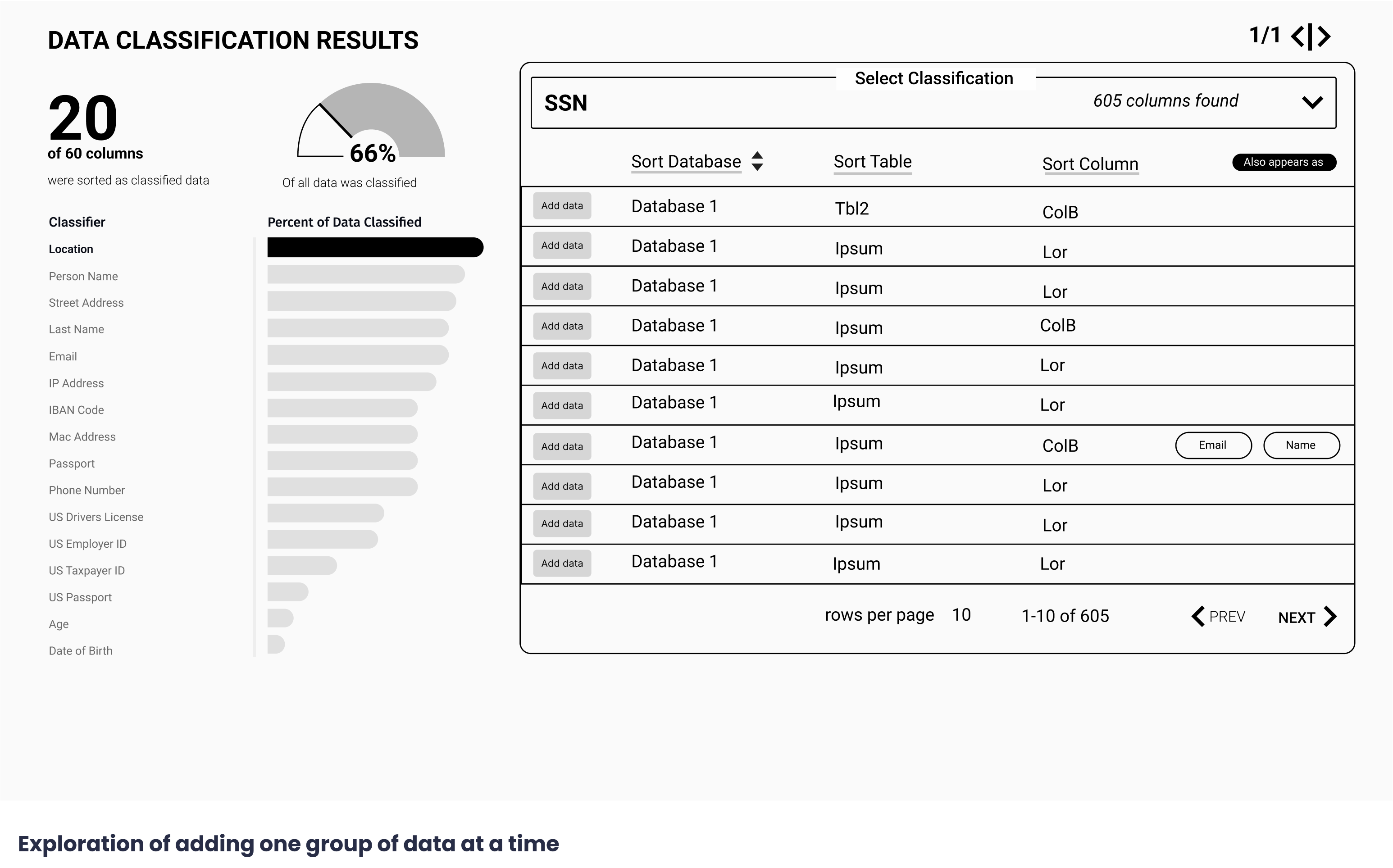
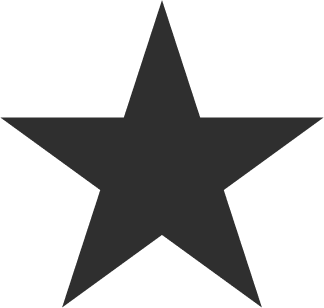
Usability testing and stakeholder feedback allowed us to determine that this feature configuration was the most intuitive.
Refinement
I built-out several flows in the prototype used to conduct contextual inquiries. I observed users through screen sharing on zoom, prompting them to navigate through the flows and recorded their reactions along the way, as well their comments about the overall experience. Based on user and engineering feedback, I was able to refine my wireframes into a high-fidelity prototype.

Delivery
The last phase of the project was the delivery from product to engineering, which involved the following four steps.
Conclusion
The feature went live in May of 2021. Marketing and Sales demo’d the feature as a core aspect of the value proposition between 2021 and 2022. This aided in the acquisition of enterprise contracts as large as 500k ARR within an individual contract. Future iterations of this feature will include the ability to create custom classifications, and bulk add-data to ALTR to allow users to scale-up their governance models.
